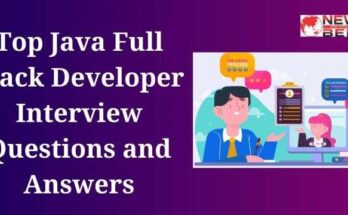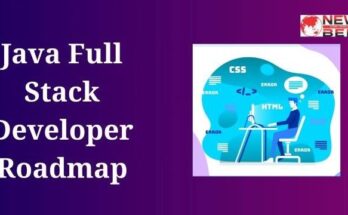Android development is a vast field with many areas to focus on, from basic application development to advanced optimization techniques and integration with various technologies. When preparing for an Android developer interview, you might encounter a wide range of questions that test your knowledge of Android fundamentals, programming concepts, and practical application development skills. Below are some common Android interview questions along with explanations:
Future Scope Of Android
The future scope of Android looks promising, driven by its strong presence in the smartphone market, continuous innovations, and expanding applications beyond mobile devices. Android’s open-source nature encourages a vast developer community to build diverse apps, enhancing user experience and expanding its ecosystem. With advancements in technologies like 5G, AI, IoT (Internet of Things), and AR (Augmented Reality), Android is poised to offer more seamless, intelligent, and interconnected experiences.
Its role in powering wearable devices, smart home appliances, and automotive infotainment systems is expected to grow, further solidifying its position in the tech world. Additionally, Google’s commitment to improving Android’s security and privacy features will likely increase its appeal in both consumer and enterprise markets. Overall, Android’s adaptability and innovation will continue to play a crucial role in shaping the future of mobile technology and beyond.
Top Android Interview Questions and Answers
1. What is Android?
Ans: Android is an open-source, Linux-based operating system primarily used for mobile devices. It was developed by Android Inc., which was later acquired by Google. Android is designed for touchscreen mobile devices such as smartphones and tablets.
2. What are the components of an Android application?
Ans: The main components of an Android application include:
- Activities: Represent a single screen with a user interface.
- Services: Run background operations without providing a user interface.
- Broadcast Receivers: Handle communication between Android OS and applications.
- Content Providers: Manage shared data between applications.
3. What is an Intent in Android?
Ans: Intents are messaging objects used to request an action from another app component. They are used for starting activities, services, or delivering broadcasts.
4. Explain the Android application architecture.
Ans: Android application architecture has several layers:
- Application Layer: Contains the applications you build.
- Application Framework: Provides high-level services to applications in the form of Java classes.
- Libraries: C/C++ libraries used by various components of the Android system.
- Android Runtime: Includes the Dalvik Virtual Machine and Core Libraries.
- Linux Kernel: Provides a level of abstraction between the device hardware and the upper layers of the Android software stack.
5. What is an Activity Lifecycle?
Ans: An activity lifecycle consists of seven methods that manage the lifecycle of an activity: onCreate(), onStart(), onResume(), onPause(), onStop(), onRestart(), and onDestroy().
6. What is a Fragment?
Ans: Fragments represent a portion of the user interface or behavior in an Activity. They can be reused in multiple activities.
7. Explain AsyncTask in Android.
Ans: AsyncTask allows you to perform background operations and publish results on the UI thread without managing threads manually.
8. What is a Service?
Ans: A Service is an application component that can perform long-running operations in the background and does not provide a user interface.
9. What are Broadcast Receivers?
Ans: Broadcast Receivers simply respond to broadcast messages from other applications or from the system itself.
10. What is a Content Provider?
Ans: A Content Provider manages access to a central repository of data. It is the standard interface that connects data in one process with code running in another process.
11. What is the difference between a Fragment and an Activity?
Ans: An Activity is a single screen with a user interface, while a Fragment is a portion of user interface in an Activity.
12. How do you save data in Android?
Ans: Data can be saved in Android through:
- SharedPreferences: Key-value pairs.
- Internal Storage: Private data on the device memory.
- External Storage: Shared data on external storage.
- SQLite Databases: Structured data storage.
- Content Provider: Sharing data across different applications.
13. What is the Android Manifest file?
Ans: The Android Manifest file (AndroidManifest.xml) provides essential information about the app to the Android system, including the app’s package name, components (activities, services, etc.), permissions, and other configurations.
14. Explain the use of the src/main/res folder.
Ans: The src/main/res folder contains resources like layouts, strings, images, and themes that your Android application uses.
15. What is Gradle in Android?
Ans: Gradle is an advanced build toolkit that manages dependencies and allows you to define custom build logic for compiling and packaging Android apps.
16. How does the Android notification system work?
Ans: The Android notification system allows apps to notify users about events happening within the app through the status bar.
17. What is an APK file?
Ans: An APK (Android Package Kit) file is the file format used by Android for distribution and installation of mobile apps.
18. Explain the concept of Intents Filters.
Ans: Intent Filters in the manifest file declare the capabilities of a component (such as activities or services) to respond to different actions or data types.
19. How do you implement Google Maps in an Android application?
Ans: To implement Google Maps, you need to integrate the Google Maps API by configuring a Google API project, obtaining an API key, and adding the necessary permissions and dependencies to your Android project.
20. What are the types of Broadcasts in Android?
Ans: There are two types of broadcasts: Normal Broadcasts (asynchronous) and Ordered Broadcasts (synchronous).
21. Explain the concept of Looper, Handler, and HandlerThread.
Ans:
- Looper: Looper loops through a message queue and dispatches messages to the corresponding handlers.
- Handler: Handler allows you to send and process Message and Runnable objects associated with a thread’s MessageQueue.
- HandlerThread: HandlerThread is a background thread with a Looper attached, allowing it to process messages sequentially.
22. What is a View in Android?
Ans: A View is the basic building block of UI components in Android. It represents a simple rectangle on the screen, displaying content or awaiting user interaction.
23. Explain the difference between px, dp, dip, and sp units in Android.
Ans:
- px (pixels): Corresponds to actual pixels on the screen.
- dp/dip (density-independent pixels): An abstract unit based on the physical density of the screen.
- sp (scale-independent pixels): Similar to dp but also scaled by the user’s font size preference.
24. What are the different storage methods in Android?
Ans:
- Shared Preferences: Store private primitive data in key-value pairs.
- Internal Storage: Store private data on the device memory.
- External Storage: Store public data on the shared external storage.
- SQLite Databases: Store structured data in a private database.
- Network Connection: Store data on the web with your own network server.
25. What is the Android Testing Framework?
Ans: The Android Testing Framework includes tools like JUnit for unit testing, Espresso for UI testing, and UI Automator for testing the user interface across multiple apps and system settings.
26. Explain the role of the R.java file.
Ans: R.java is an auto-generated file that contains resource IDs for all the resources available in your res/ directory. It allows you to access your resources in a type-safe manner.
27. What is the Android Jetpack?
Ans: Android Jetpack is a suite of libraries, tools, and guidance to help developers follow best practices, reduce boilerplate code, and write code that works consistently across Android versions and devices.
28. How do you manage memory in Android?
Ans: Memory management in Android involves using efficient data structures, avoiding memory leaks by managing context appropriately, recycling objects like bitmaps, and profiling memory usage with tools like Android Studio’s memory profiler.
29. What is ProGuard, and how do you use it?
Ans: ProGuard is a tool that minifies, obfuscates, and optimizes the bytecode in Android applications. It helps to reduce the size of the APK and protect the app code against reverse engineering.
30. Explain how to update the UI from a background thread.
Ans: To update the UI from a background thread, you can use a Handler to post Runnable tasks on the main thread’s message queue. Alternatively, you can use the runOnUiThread() method in an Activity.
31. What are Android App Widgets?
Ans: App Widgets are miniature application views that can be embedded in other applications (like the home screen) and receive periodic updates.
32. What is a Loader in Android?
Ans: Loaders simplify data loading from a database or the internet, providing asynchronous loading of data, monitoring the source of their data, and automatically delivering new results when the content changes.
33. Explain the use of the Volley library.
Ans: Volley is an HTTP library that makes networking for Android apps easier and faster, for doing standard networking operations, including managing request queues, making asynchronous requests, caching, and prioritizing requests.
34. What is a SurfaceView?
Ans: SurfaceView is a view that provides a dedicated drawing surface within the view hierarchy. It allows to render complex scenes or animations outside the regular UI thread for better performance.
35. How do you secure Android apps?
Ans: Securing Android apps involves using HTTPS for network communications, applying ProGuard for obfuscation, securing data storage with encryption, using Android Keystore for key management, and following best practices for user authentication and authorization.
36. What is Dependency Injection in Android?
Ans: Dependency Injection (DI) is a design pattern that allows a class to receive its dependencies from an external source rather than creating them directly. In Android, DI frameworks like Dagger or Hilt help manage object lifecycles and dependencies.
37. Explain the MVP (Model-View-Presenter) architecture.
Ans: MVP is an architectural pattern that separates the application into three main components:
- Model: Manages the data, logic, and rules of the application.
- View: Displays the data (the UI) and notifies the Presenter about user actions.
- Presenter: Acts as a middleman, retrieving data from the Model and formatting it for display in the View.
38. What is LiveData in Android Architecture Components?
Ans: LiveData is an observable data holder class that respects the lifecycle of other app components, such as activities, fragments, or services. It ensures your app does not crash due to stopped activities and avoids memory leaks by automatically cleaning up references.
You May Also Read:
What is Digital Marketing in Hindi
SEO Interview Questions and Answers
What is Affiliate Marketing Meaning
Google Search Console Interview Questions And Answers
39. Explain Room Database.
Ans: Room is an abstraction layer over SQLite designed to provide a robust database access mechanism while harnessing the full power of SQLite.
40. What are the best practices for Android Development?
Ans: Best practices include:
- Following the Material Design guidelines for UI design.
- Writing clean, readable, and maintainable code.
- Using Android Jetpack components and architecture patterns (like MVVM) for a robust, testable app structure.
- Paying attention to the app’s performance and memory usage.
- Ensuring your app is accessible to as many users as possible, including those with disabilities.
- Regularly updating the app with security patches and new features.
Conclusion:
Concluding Android interview questions and answers, it’s evident that a strong grasp of Android fundamentals, including its architecture, lifecycle management, and user interface components, is crucial. Knowledge of modern development practices, such as using Kotlin and Java, understanding of Material Design guidelines, and proficiency in handling data storage with SQLite or Room, are also essential. Being familiar with advanced concepts like background processing, integrating with RESTful APIs, and applying best practices for security and performance optimization can significantly enhance a candidate’s profile. Additionally, the ability to troubleshoot common issues, use Android Studio efficiently, and stay updated with the latest Android developments reflects a well-rounded and competent Android developer ready to tackle challenges in the ever-evolving mobile app development landscape.





You helped me a lot with this post. I love the subject and I hope you continue to write excellent articles like this.